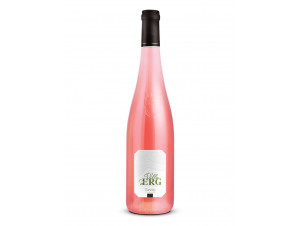You have no items in your shopping cart.
Wine Tavel
-
Top Selling
-
Top Selling
-
Top Selling
- -17%
- -17%
- -20%
The history of Tavel wine
As with most of our wines, we owe the original cultivation of Tavel to the Romans. In ancient times, the Phoceans landed on our shores and began to introduce the vine as they penetrated deeper into what would later become France. It was then the Romans who continued the viticulture and archaeological excavations have uncovered a rich Gallo-Roman estate on the Tavel estate which attests to a very abundant wine production.
The barbarian invasions that followed the decline of the Roman Empire slowed down production, but the monks of the Middle Ages carried out an enormous amount of work that gave Tavel a new lease of life. In the mid-14th century, Pope Innocent VI chose a wine of Tavel for his papal table. It was a wine from the Prieuré de Montézargues, a wine estate that still exists.
The place of vines in the local economy took on important proportions in the 16th and 17th centuries. The cadastre of 1636 shows that the peasants turned away from the cultivation of cereals for food and preferred to engage in wine growing, which enabled them to make a better living. The "Syndicat des Propriétaires Viticulteurs de Tavel" was founded in 1902. It worked on the delimitation of the Tavel production area, which came into being in 1926. The AOC of Tavel is decreed in 1936. It was the first AOC for rosé wine in France.
Tavel, a rosé wine of the highest quality
The kingdom of Tavel rests on a soil made up of sand, pebbles, cobbles and lauzes. On this terroir, only one wine is grown: rosé. Tavel is not reserved only for barbecues and summer picnics, but can be served all year round. It can be consumed young, but also lends itself to ageing. When young, it appears sweet and flowery. It then becomes more spicy and full-bodied, and then, as it ages further, it turns into a full-bodied and peppery wine.
Honoré de Balzac often referred to Tavel rosé wine, saying that it was one of the few rosés that benefited from ageing. Tavel wine is exported all over the world. In Europe of course, but also in Asia, Russia and the United States. Great restaurants serve it at their tables and it has the incredible advantage of going well with all types of cuisine, even the most distant from our French cuisine. It can thus accompany colourful, exotic and spicy cuisines.
The 9 grape varieties of Tavel wine
The Tavel AOC uses 9 grape varieties. None of them is allowed to exceed 60% of the blend. This induces a wine of great diversity. The Syrah is chosen for its aromatic power evoking red fruits. The Mourvèdre brings its power, aromatic freshness and unique colour. The Cinsault is selected for its aromatic finesse. The Clairette is unique in its unctuousness, as well as its fullness. It enriches the Tavel with its aromas of flowers of all kinds. The Grenache is powerful and round. The Bourboulenc provides great freshness and floral notes. The Carignan lends elegance to the blend, thanks in particular to its tannins. The Picpoul is fine and enhances the wine with its floral notes. The Calitor is a very rare grape variety that contributes to the richness of Tavel.
Clairette-de-Die
Côtes du Rhône Villages Suze-la-Rousse
Côtes-du-Rhône Villages Sainte-Cécile
Côtes-du-Rhône-Villages Chusclan
Côtes-du-Rhône-Villages Laudun
Côtes-du-Rhône-Villages Massif-d'Uchaux
Côtes-du-Rhône-Villages Plan-de-Dieu
Côtes-du-Rhône-Villages Rochegude
Côtes-du-Rhône-Villages Sablet
Côtes-du-Rhône-Villages Séguret
Côtes-du-Rhône-Villages Signargues
Vin de Pays des Collines Rhodaniennes
Vin de Pays des Collines Rhodaniennes





















 TWIL - Achat de Vin
TWIL - Achat de Vin


